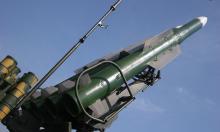R e p o r t e r's n o t e-b o o k first birch bark letter was found in Veliky Novgorod 51 years ago
The world's first birch bark letter was found 51 years ago, on July 26th, 1951, in the area of excavations of the ancient roadway in the 14th-15th centuries' layers in Veliky Novgorod (Russia's North-West).
Nina Akulova, a worker at the Novgorod furniture factory, who was earning additional money at archaeological excavations during her vacation, found the first birch bark letter.
After that, birch bark letters were discovered in other cities - Moscow, Smolensk, Pskov, Staraya Russa, Tver and Torzhok (Russia), Vitebsk and Mstislavl (Belarus) and Zvenigorod (Ukraine). Nowadays, there are 1,007 birch bark letters.
Twenty-seven oldest birch bark letters date back to the first half of the 11th century and the latest - to the middle of the 15th century. Some 450 letters were written in the 11th - the beginning of the 13th century before the yoke of Golden Horde.
Archaeologists found most birch bark letters (917) in Nizhny Novgorod and only 90 - in other cities.
Among them there was the first letter with obscene words. A resident of Staraya Russa wrote a letter to his brother and recommended him, to put it mildly, not to show off in his trade business.
The first obscene birch bark letter dates back to the 12th century. This find refutes the opinion that the ancient Slavs didn't know the foul language before the Mongolian-Tatar invasion and that foul words came into Russian from the Turk languages.
Unfortunately, this obscene birch bark letter had no signature. Historians believe that if the author of this letter could have known that it would be found a thousand years later, he would have signed it and gone down in Russian history as the first "official ribald".
A great number of birch bark letters, discovered in Veliky Novgorod and Staraya Russa, can be explained by the extent of the Novgorod lands. If a Smolensk resident could take a ride to transmit an order or pass some information, Novgorod residents had to write letters, because their lands extended to thousands of miles. This fact explains literacy of boyar's managers and even some peasants, who had to read those orders.
Originally, a birch bark letter looks like a roll. Archaeologists unroll it carefully in hot water and place it between glasses.
Scraps of ancient birch bark letters are of great historic value. The discovery of the first letters allowed historians and other scholars to open a new source of information, which was not available in chronicles. Unlike chronicles, birch bark letters were full of details from everyday life. For instance, archaeologists read such a piece of advice in one birch bark letter, "When running a home, you should rise early and go to bed late".
In addition, the discovery of birch bark letters boosted the integration of scholars. For instance, birch bark letter united efforts of linguists and historians, who need each other to examine the letters.
Nowadays, archaeologists don't predict how many birch bark letters they are to find in the future. According to academician Valentin Yanin, the head of the Novgorod archaeological expedition, Veliky Novgorod's cultural layers keep some 20,000 letters. So, archaeologists have a lot of work to do.
Subscribe to Pravda.Ru Telegram channel, Facebook, RSS!





